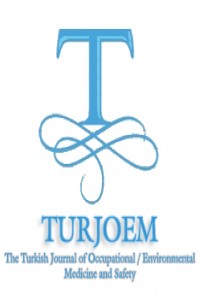Abstract
Thalassemia is a
hereditary blood disease. Beta (β)-thalassemia is an autosomal recessive and
also one of the most common genetic diseases in worldwide that is caused by a
point mutation on β-globin gene which is localized on short arm of chromosome
11 as a cluster. In other words, this disease is characterized by malfunctions
during the globin chain synthesis of hemoglobin synthesis process. Unbalanced
globin chain synthesis is the major cause of low level hemoglobin production
leading to anemia. In iron deficiency anemia, sensitivity against oxidants of
erythrocytes increases and life expectancy is shortened. Oxidative stress is
caused by the increase of free radicals and it creates disorder in metabolism
due to damage in biological macromolecules. Multifactorial mechanisms
facilitate oxidative damage in thalassemia because of free, unpaired, unstable
globin subunits create superoxide and hydroxyl radicals. Hydroxyl radical,
excessive oxidizing free radical, leads to protein aggregation and
hydroxylation of DNA. Moreover, it causes event such as decreasing in the
deformability with membrane skeleton impairment, premature aging of the
erythrocyte with antigenic changing, increasing in the rigidity, peroxidation
of membrane lipids and losing in intracellular K+ with deterioration of cation
exchange. As to thalassemia patients, increased free radicals cause damage to
the tissue in patients with suffering from iron overload via frequent blood
transfusions and iron accumulation leads to production of toxic oxygen radicals.
This study was supported by the Scientific
and Technical Research Council of Turkey (TUBITAK), SBAG-114S312 Research Fund.
References
- Yasemin KARTAL, Zeliha KAYAALTI
- Department of Physiology, Hacettepe University, Faculty of Medicine, Turkey. Department of Forensic Toxicology, Ankara University, Institute of Forensic Sciences, Turkey.
Abstract
References
- Yasemin KARTAL, Zeliha KAYAALTI
- Department of Physiology, Hacettepe University, Faculty of Medicine, Turkey. Department of Forensic Toxicology, Ankara University, Institute of Forensic Sciences, Turkey.
Details
| Journal Section | Articles |
|---|---|
| Authors | |
| Publication Date | February 16, 2017 |
| Published in Issue | Year 2017 Volume: Volume 2 Issue: İssue 1 (1) - 2.İnternational Congress Of Forensic Toxicology |


